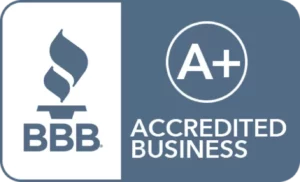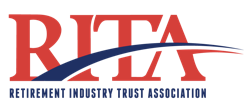We all know that the decisions we make today impact our success tomorrow. Of course, this same rule applies to saving for retirement, even if you are 20 years old and retirement seems far down the road. You cannot guarantee retirement wealth, but you can employ simple steps to make it more achievable. For example, you can use your retirement funds to invest in lucrative assets and enjoy the benefits of tax-deferred and even tax-free growth. Additionally, you can choose the right financial institution that work only to serve your interests. By making a few wise decisions, you can look forward to your Golden Years rather than work through them.
4 Ways to Create Retirement Wealth
Some of these steps are designed to help people who opt for a self-directed retirement plan. A Self-Directed plan, either the Self-Directed IRA or Solo 401(k), is an IRS approved retirement plan that allows individuals to invest in alternative asset investments. Whereas a traditional IRA restricts IRA investors to products that the financial institutions, such as Vanguard, offer, which includes stocks, bonds, mutual funds, etc. By self-directing your retirement plan, you diversify the assets within the account so they don’t move in the same direction. Additionally, you get to invest in assets you understand, like real estate, precious metals and more.
1. Choose the Right Retirement Plan
Solo 401(k)
If you are self-employed or a small business owner with no full-time employees, you will benefit most from the Solo 401(k) retirement plan. The Solo 401(k) is similar to an employer-sponsored 401(k), except is designed for one person who generates self-employment income. Therefore, if you are a sole-proprietor, contractor, independent consultant or freelancer, you can establish a Solo 401(k). You can establish a Self-Directed IRA if you are self-employed, but due to the features of a Solo 401(k), it is highly advantageous to establish one, if eligible.
Higher Contributions
For example, the Solo 401(k) will allow you to reach a higher maximum contribution than any other retirement plan. With the Solo 401(k), you make contributions as an employee (elective deferral contribution) and employer (profit-sharing contribution).
For 2023, you can contribute up to $22,500 (dollar for dollar) as an elective deferral if you’re under 50. If you’re 50 and older, you can contribute up to $30,000 (dollar for dollar).
On the profit-sharing side, the contribution is based on the percentage of income. If your business is a C-corporation or multi-member LLC, the maximum profit-sharing contribution is up to or equal to 25% of your W-2 income of guaranteed payment amount in the case of a partnership. However, if your business is a single-member LLC or sole-proprietor, the maximum profit-sharing contribution is up to or equal to 20% of your schedule C income.
When you combine both types of contributions, the maximum contribution for individuals under 50 is $66,000 for 2023 and $67,500 for individuals 50 and older.
Additional benefits of the Solo 401(k) include the ability to use nonrecourse funds to purchase real estate without triggering the UBTI tax. This is a great advantage, as the UBTI tax rate can be as high as 37%.
You can also borrow a loan up to $50,000 or 50% of your account value, whichever is less. With an IRA, you cannot borrow even $1 without incurring penalties.
Self-Directed IRA
For retirement investors who are not self-employed, you can establish the Self-Directed IRA, which comes with many benefits. The maximum contribution for 2023 is $6,500. You can provide less than the maximum, or even skip a year. However, you cannot go over the maximum contribution and if you choose to skip one year, you cannot make up the difference in the following tax year.
With a Self-Directed IRA, you will benefit from:
- Diversification – You can invest in stocks, mutual funds and other traditional investments, but you can also invest in real estate, cryptocurrencies and alternative investments.
- Inflation Protection – Hard assets, like real estate, better protect investors from the havoc of inflation.
- Tax-Deferral – All income and gains your pretax retirement account generates will grow tax-free until you take a distribution; at the time of a distribution, you will likely be in a lower tax bracket and ultimately save more.
2. Asset Diversification
When you establish a Self-Directed retirement plan, you gain a world of investment opportunities to choose from. As long as the investment is not prohibited, such as collectibles, works of art and life insurance, you can make the purchase. However, keep in mind that you cannot use your retirement funds to benefit a disqualified person, which includes yourself.
Traditional assets, such as stock and bonds, are among the most popular assets retirement investors purchase. Approximately 90% of retirement assets go toward the financial market. If you only invest within traditional assets and the stock market takes a dive, you can lose a lot of your money. However, if you use retirement funds to invest in a variety of assets, such as real estate, precious metals and even cryptocurrency, it is less likely that they will move in the same direction. By diversifying your retirement portfolio, you better protect your assets when the market takes a dive, getting you several steps closer toward retirement wealth.
3. Consider Roth
All distributions from a pretax retirement account are taxable once you take a distribution. However, a Roth IRA or 401(k) allows tax-free distributions. Additionally, there is no required minimum distribution (RMD), therefore you are not forced to withdraw money from your retirement account once you reach a certain age. Furthermore, you can contribute to a Roth account forever, whereas a traditional retirement plan stops contributions when you reach 73.
4. Start Early
President of IRA Financial, Adam Bergman, says one of the keys to retirement wealth is to start young. Just take a look at the numbers and discover how much more you will save if you start saving for retirement at age 25 versus age 50.
Age 50
As you get older, it is less likely that you will retire wealthy, but if you’re age 50, that doesn’t mean you shouldn’t start. If you begin saving at 50, let’s see where you will be once you reach retirement age.
Current Age: 50
Starting Solo 401(k) Balance: $0
Expected Rate of Return: 7%
By age 70, you will have $487,539 with a pretax retirement plan.
Age 25
Retirement may seem far off when you’re 25, but you know the importance of starting young, so you begin saving.
Current Age: 25
Starting Solo 401(k) Balance: $0
Expected Rate of Return: 7%
When you reach 70, you will have $3,197,037 with a pretax retirement plan.
As you can see, retirement wealth is far more achievable when you begin early. Not only that, but you must be consistent with your contributions for this to become a reality.
Get in Touch About Your Retirement Wealth
If you have any questions, contact IRA Financial Trust directly at 800-472-1043.











